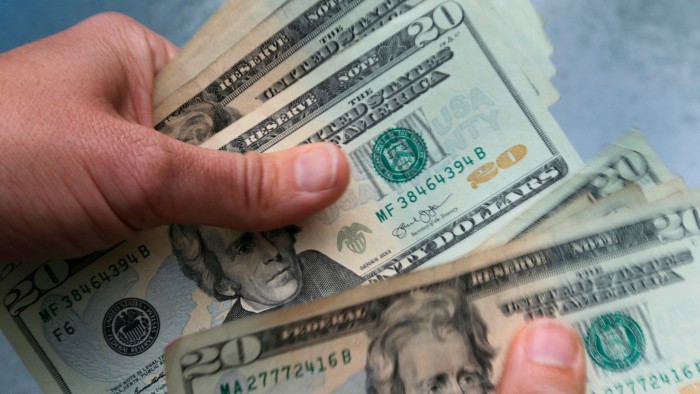Unlock the Editor’s Digest for free
Roula Khalaf, Editor of the FT, selects her favourite stories in this weekly newsletter.
Who benefits when markets lurch? Generally, those sitting on giant piles of cash. Investors who find themselves with dry powder during a crisis can relieve overextended owners of their assets, ease liquidity crunches and hopefully minimise market contagion. All for a price, of course.
Think, for example, of buyout barons. Private equity firms had $1.6tn of dry powder globally at the end of September 2024, according to PitchBook data. That’s money investors have committed to wire when it is needed for a deal. Finding financing to take out stricken public companies might not be straightforward, but private credit — a corner of the investment world that is also flush with cash — would be on hand to help.
So much for today’s deals. The snag is that yesterday’s may soak up a lot of managers’ attention. True, private equity portfolios are underexposed to import-reliant consumer discretionary and manufacturing companies. These make up 23 per cent of private equity groups’ net asset value, says Neuberger Berman, about half of what these sectors contribute to US GDP. But the bad news is that private equity-owned companies tend to have a lot of debt. The recent trend towards leveraging up at the portfolio level — via so-called NAV loans — only makes this worse.
What’s more, some portfolios look a bit long in the tooth. With IPOs and M&A scarce, buyout firms have found it difficult to exit investments. Big pension and endowment funds — important clients for private equity — had hoped this would be the year they would finally get a serious chunk of money back.
Instead, falling public markets mean the percentage share of their portfolios taken up by private equity has risen to levels some might find uncomfortable. They may also have competing calls on their money: University endowment funds are raising debt amid threats of federal support being revoked.
With plunging equity markets delaying exits by at least a year, and possibly well beyond, it is not inconceivable that large, cash-strapped investors might try to cajole buyout-firm managers to hold their fire. That, or find someone to take their private equity investments off their hands.
That creates an opportunity for another kind of private equity investor: secondary funds. These buy preloved portfolio companies or take on investors’ stakes in funds. If a pension fund wants cash back and the buyout firm isn’t delivering, secondaries can square the circle.
This increasingly looks like a buyers’ market. The discount to NAV at which secondary funds acquire buyouts has been widening, estimates Preqin, with prices falling to about 75 cents on the dollar. With increasing negotiating power come higher returns: those on secondaries’ most recent vintages have outperformed.

Secondary funds, which have been growing rapidly, will also need to call on dry powder to relieve the pressure on buyout funds. But given the potential opportunity, their investors may be more welcoming of the call when it comes.
Source link









